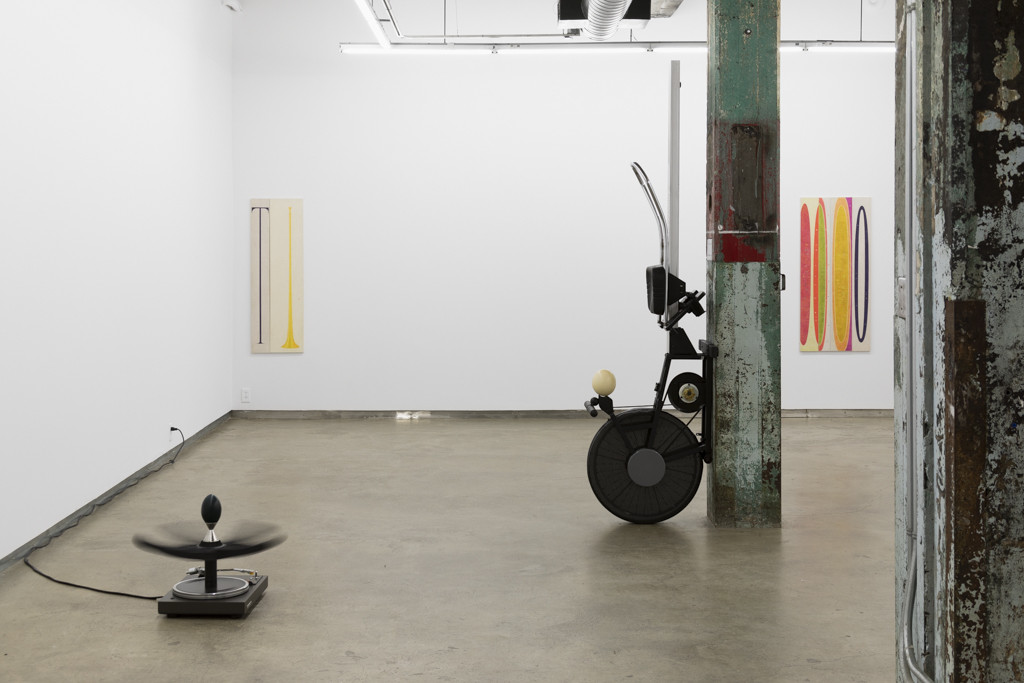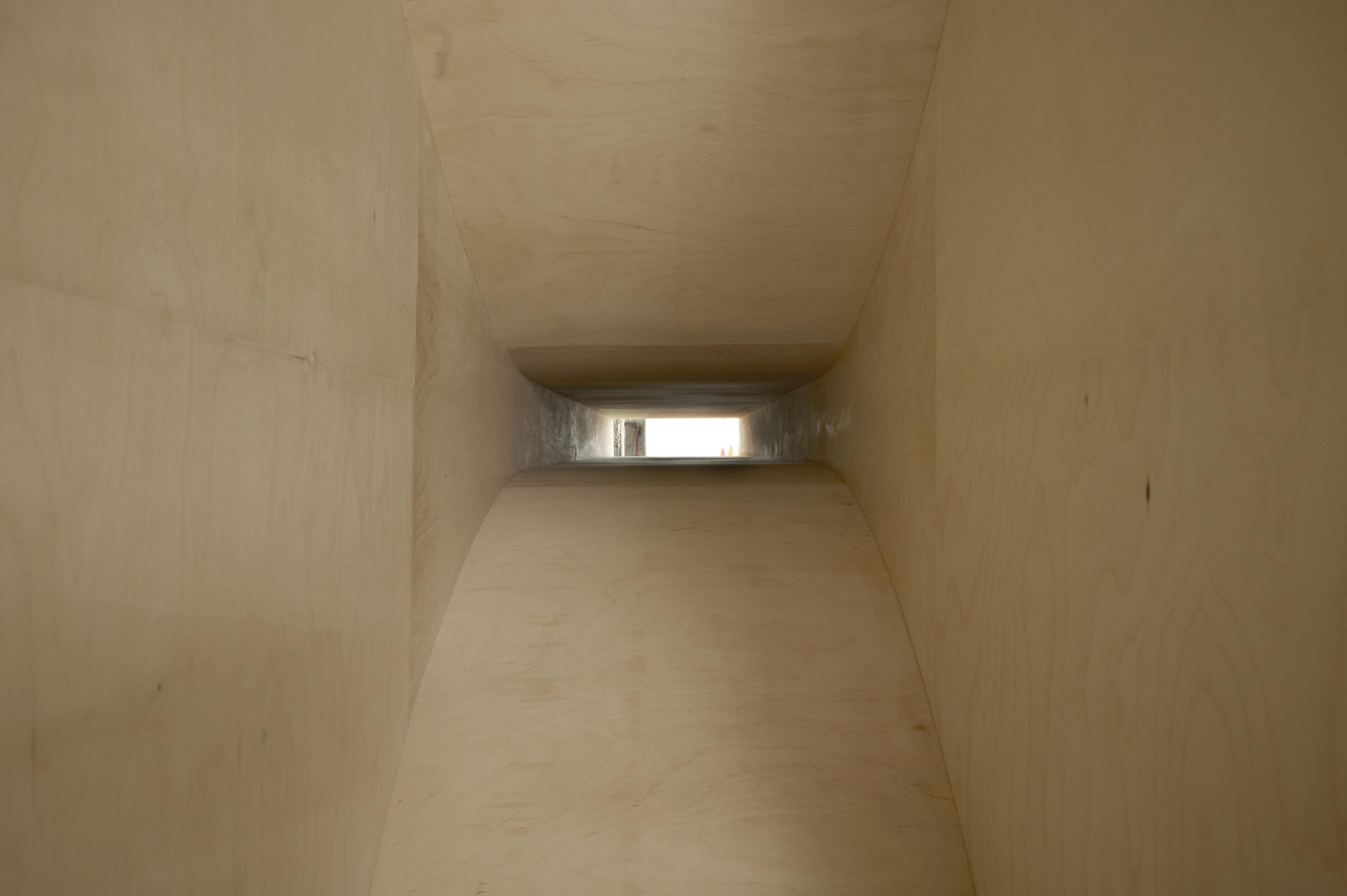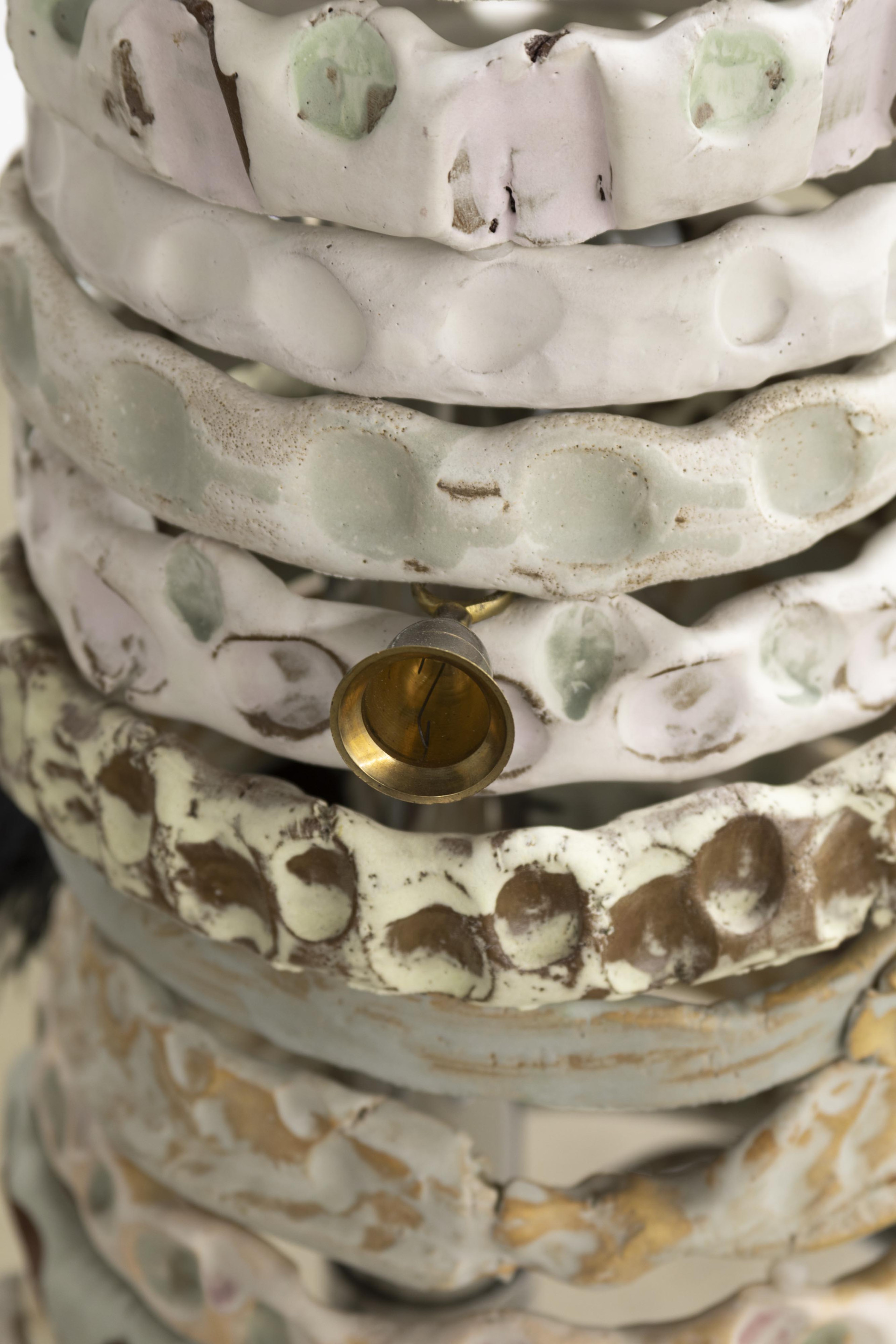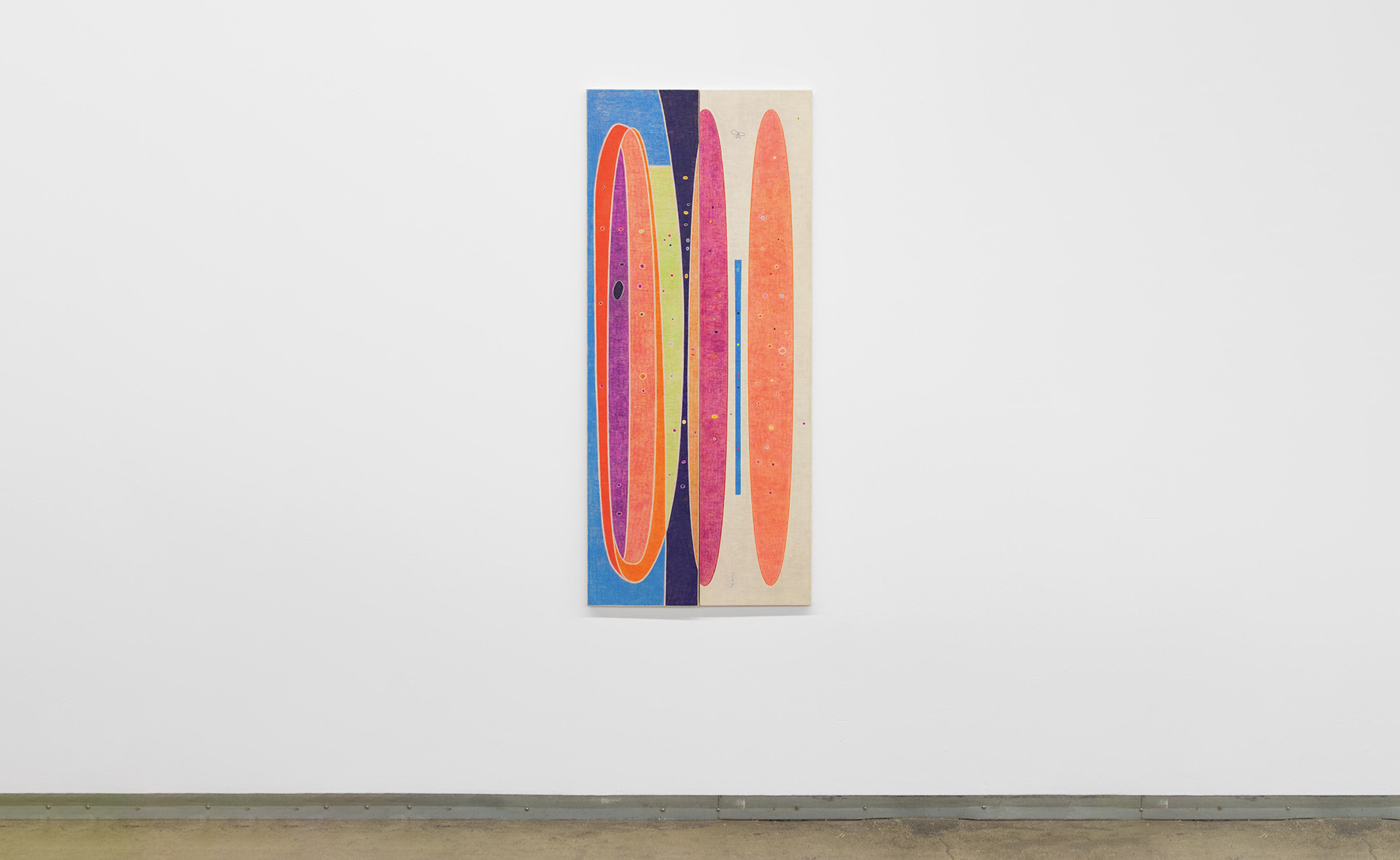





The exhibition Revelation is an invitation to discover the mystical universe and varied art practice of Marlon Kroll. Composed of sculptures, drawings, ceramics, and found objects and seeking connection with the beyond through a strong esoteric component, the exhibition builds on the experiment of travelling between dimensions.
Entering Kroll’s studio means entering a world that initially seems chaotic but which is completely under the artist’s control. Found objects and propsprojects in process or on hiatus, sketches, and scraps lie strewn on the floor, accumulate in piles, cover the walls. The work table, crammed in a corner behind the door, is as cluttered as the space. On it are heaps of colour pencils and their shavings, scattered here and there. Kroll uses the brand Faber-Castell to make his drawings on canvas [1].
At first, elliptical and geometric shapes are sketched quickly in pencil to give the composition a rhythm, create a dynamic. They refer both to body organs and architectural elements, evoking notions of passage, transition, and border—key concepts in the exhibition. Imagined in the form of a funnels, these shapes guide the eye, channeling energy. In My own personal mountain, a spiral could as easily evoke a DNA sequence as a spiral staircase, and in A type of infinity, the profile of a trumpet could be confused with that of a larynx. Over these large shapes, demarcated in solid colours, is a layer of myriad colourful points. The artist associates these with vortices, points of entry into a spiritual dimension, or even birds carrying messages to loved ones. Subject to a scrupulous selection, each colour might not be revealed to the artist for a long time. One day, he penetrates its mystery or as he says, “finds the clue of the colour.” [2] Like music notes composing a chromatic rhapsody, the colours vibrate before our eyes and provoke abstract emotions, referring to experiences that are difficult to explain in words, just as it is difficult to define colour [3].
The technique for making these works involves a meticulous preparation of the canvas: a very thin fabric is stretched on wood, covered in gesso, then carefully sanded in order to obtain an extremely smooth finish, as porous as skin. A sensory interaction, a quasi-alchemical reaction occurs between the medium and its support. “Gesso like skin and colour like a tattoo,”[4] Kroll explains. As the colour pencil successively passes over the primed canvas, as in a tattooing process, the surface gets veiled by a waxy film [5]. Incidentally, the etymology of the word colour, from Latin color, refers to something that covers. In Greek, the word khrôma comes from khrôs, which means skin. The particular attention given to the work’s surface and the ambiguous shape between musical instrument and vocal organ also recur in the sculpture Big blue empty. Its form—a wood support covered in paper like bark—evokes a loudspeaker or a flute, while its function is to take us into another dimension.
The intense colours and engaging forms are vectors of an energy that attempts to lift the spirit and encourage travel to another dimension [6]. Kroll compares this energy to orgone energy [7], a term invented by a 19th century psychoanalyst to describe the divine creative force, inspired by the ancient Chinese philosophy of Taoism, the fundamental essence of the universe. In Revelation, the breath of creation mixes with the breath of life, and the works, standing in for spiritual and emotional mediums, aspire to transform into accumulators and transmitters of cosmic energy.
Caroline Andrieux, June 2023
Translated by Oana Avasilichioaei
INTRODUCTORY VIDEO
[1] The artist calls them “paintings.” Marlon Kroll, Mark Lanctôt, and François Letourneux also describe the surfaces as Supports for Drawing (Muslin, T-shirts, Bedsheets) in La machine qui enseignait des airs aux oiseaux, group exhibition catalogue (Montreal: Musée d’art contemporain de Montréal, 2020), 279.
[2] Marlon Kroll, studio visit with author, May 2023.
[3] “When we’re asked, what do the words ‘red’, ‘blue’, ‘black’, ‘white’ mean? we can, of course, immediately point to things which have these colours, but our ability to explain the meanings of these words goes no further!” Ludwig Wittgenstein, Remarks on Colour, ed. G.E.M. Anscombe, trans. Linda L. McAlister and Margarete Schättle (Oxford: Blackwell Publishers Ltd., 1977), 11. Also see Michel Pastoureau’s books on colours: Blue, Red, Black, and Yellow.
[4] Marlon Kroll, meeting with author, May 2023.
[5] Marlon Kroll, Mark Lanctôt, and François Letourneux describe it as A Water-Repellent Skin (Oil, Beeswax, Vaseline) in La machine qui enseignait des airs aux oiseaux, group exhibition catalogue (Montreal: Musée d’art contemporain de Montréal, 2020), 279.
[6] “These days I think my work is about the mediumship of objects and how form and line can focus and collect energy, like sympathetic magic.” Marlon Kroll, text for the exhibition Fireflies, Parc Offsite, May 2023.
[7] Wilhelm Reich invented a metal-lined device called the “orgone accumulator,” believing that the box trapped orgone energy that he could harness in groundbreaking approaches to psychiatry, medicine, the social sciences, biology, and weather research.
The artist wishes to thank Nadia Kroll, Guenter Schulz, Jeba Bowers Murphy, Gummy, his dear friends, Dexter Barker Glenn, Jacob Lepp, Catherine Desroches, Kara Skyling, the incomparable Fred Chabot who has made all his projects possible over the past two years, the Canada Council for the Arts, Morgane Lecocq-Lemieux, Milly Alexandra Dery, Alexandre Piral, Edward Maloney, Ally Rosilio, Clara Déry, and of course Caroline Andreuix, for believing in him and giving him a chance.
Marlon Kroll
Marlon Kroll is a German/Canadian artist living and working in Montreal. Kroll holds a BFA in Fine Arts (Ceramics concentration) from Concordia University. In 2020, Marlon Kroll received the William and Meredith Saunderson Prize for Emerging Artists from the Hnatyshyn Foundation.
